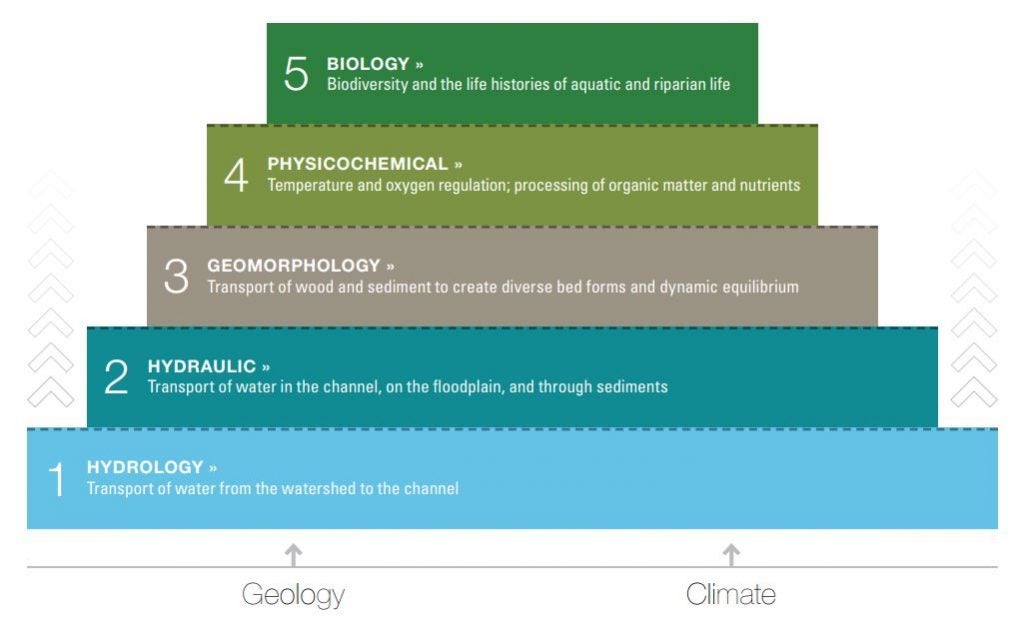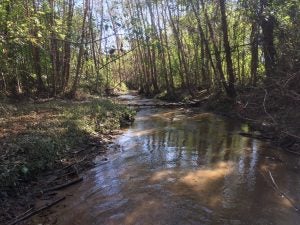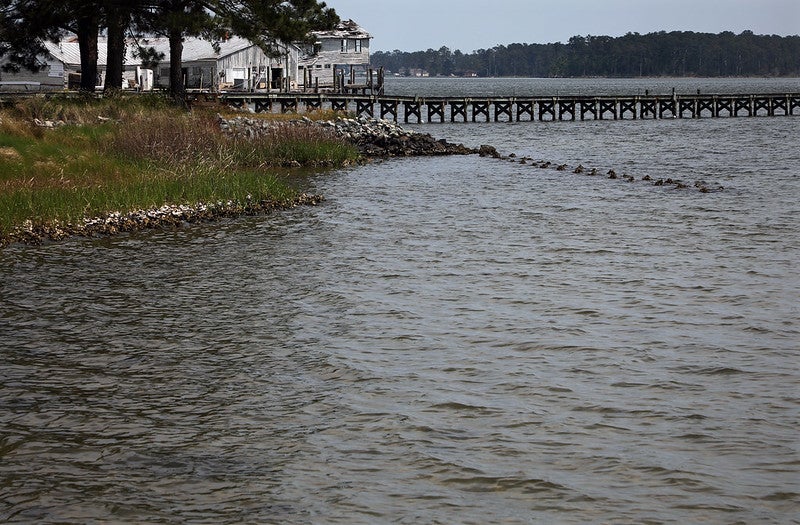It’s time for stream policy to catch up with the science

Streams are one of the most important sources of drinking water across the country. That’s why it is especially alarming that scientists have concerns about North Carolina’s streams and rivers, where I get much of my drinking water.
But streams aren’t just for drinking. These waterways provide countless other benefits to local communities, including recreational opportunities, flood control, improved fish and wildlife habitat, and irrigation for agriculture, to name a few. That’s why it’s vitally important that impacts to streams are offset with effective restoration.
Earlier this month, I visited the site of a successfully restored stream not far from my home with Will Harman, stream mitigation expert at Stream Mechanics and partner to our stream work at EDF.
Will has been working with streams for over 25 years – first launching the stream restoration program at North Carolina State University, and then starting his own private company for stream restoration and mitigation. His three-pronged approach involves conducting applied research, teaching and completing projects.
During our site visit, I had the opportunity to ask Will several questions about the site, the tools he uses to design stream restoration projects, and next steps for protecting streams in North Carolina and beyond.
Can you tell us about the site we’re visiting? What were some of the challenges here?

The site we are visiting today was restored about 13 years ago. There are two creeks – the Smith Creek and the Austin Creek – that meet here at the Smith-Austin site.
This is a very interesting area because there is a soccer field in between the two streams and housing developments on either side. A stereotypical stream restoration project usually takes place on old farm sites. That’s what made restoration for this particular site unique, and challenging, because it took place in an urbanizing watershed. It was originally a very rural area but the land use changed very quickly. Our restoration took place at the same time as the suburb was being developed, which has pros and cons.
Current challenges of the site include local and long-term stewardship. These streams are located right in people’s backyards, making it important that local community members are aware of how to be good stewards.
What are the greatest challenges of stream mitigation, in general?
The process of offsetting stream impacts through “debits” and “credits” is a huge challenge. Accounting for stream-functional loss is always complicated, because it’s hard to know exactly how much improved stream function needs to be created to truly offset the impacted stream.
Working with EDF, we have developed a new way to account for stream impacts and offsets through a Stream Quantification Tool that can better ensure restoration projects have the desired results.
The current accounting system in North Carolina is based off of the ratio method, which states that if you impact 100 feet of streams, for example, you must mitigate (restore or improve) 200 feet of streams. You can increase or decrease the ratio based off of the quality of the stream to be impacted, but the ratio is usually 2:1.
The process of crediting is based off of the geometry of the stream, which is broken into three parts: the dimension (width and depth), the pattern of the stream (if it curves), and the profile (slope). If all three parts are restored, then it is one credit per foot restored. If only two parts are restored, then it is two feet of restoration for one credit. If only one part is restored, then it is three feet of restoration for one credit. It’s a confusing process that does not account for losses to stream functions – only changes to the channel shape or form.
Working with EDF, we have developed a new way to account for stream impacts and offsets through a Stream Quantification Tool (SQT) that can better ensure restoration projects have the desired results. The SQT clearly shows the loss to stream functions on the impact side and the improvement to function on the mitigation side.

What does the Stream Quantification Tool (SQT) do?
The SQT is a measurement tool that evaluates the quantity and quality of streams using a unit called “functional feet.” This unit is based off of five different stream functions and can help to guide more effective restoration, as it will identify areas where restoration will provide the most benefit.
If you had the SQT 15 years ago, what would you have done differently at this particular site?
The SQT would have been useful to have for this site because it would have highlighted other functions that needed to be improved. We could have used additional restoration activities to improve these functions.
For example, we weren’t paying attention to the role of large woody debris on hydraulic and geomorphic functions, and the creation of habitat. If I had the tool, I would have added more woody debris into this channel, since that helps provide fish habitat, helps to trap organic matter (food for aquatic insects), and encourages biological diversity.
How has stream mitigation changed over your career?

In North Carolina, stream mitigation policy has changed very little, even though the science and technology have evolved. The SQT is a good example of how the science and technology have advanced. Here is a tool that will tell stream practitioners where restoration will be most effective and provide the greatest benefit to the stream. It breaks down the five different stream functions from our pyramid, measures where they currently stand, proposes parameters, and presents the data in one comprehensive table that shows where work was effective and where it wasn’t. This is a way of showing actual information about stream mitigation – not just data – and it’s incredibly useful to improving the way we restore impacted streams.
What is the greatest benefit of using the SQT?
The SQT offers many benefits because effective stream restoration greatly enhances the ecosystems and communities around streams. Streams are reconnected to their floodplains, the habitat is improved, the surrounding vegetation is healthier, and there is less erosion.
Another great benefit of the SQT is that the architecture is extremely flexible. It can be customized to any region or location using basic spreadsheet functions. North Carolina has been a leader in incorporating the latest science into efforts to improve stream mitigation policy. Tennessee, Wyoming and Colorado are currently working to adapt the SQT into their stream mitigation policies and practices as well.
The greatest reward that comes from using the SQT and stream restoration in general is seeing a stream come back to life. The site of a stream that had very little habitat and is now thriving with life is a testament to the ecological restoration industry.
Related:
Hurricane Matthew teaches us four important lessons about resilience >>
From Tennessee to the arid West, water runs through my work >>
Relationships and incentives: My secret ingredients for better resource management >>












